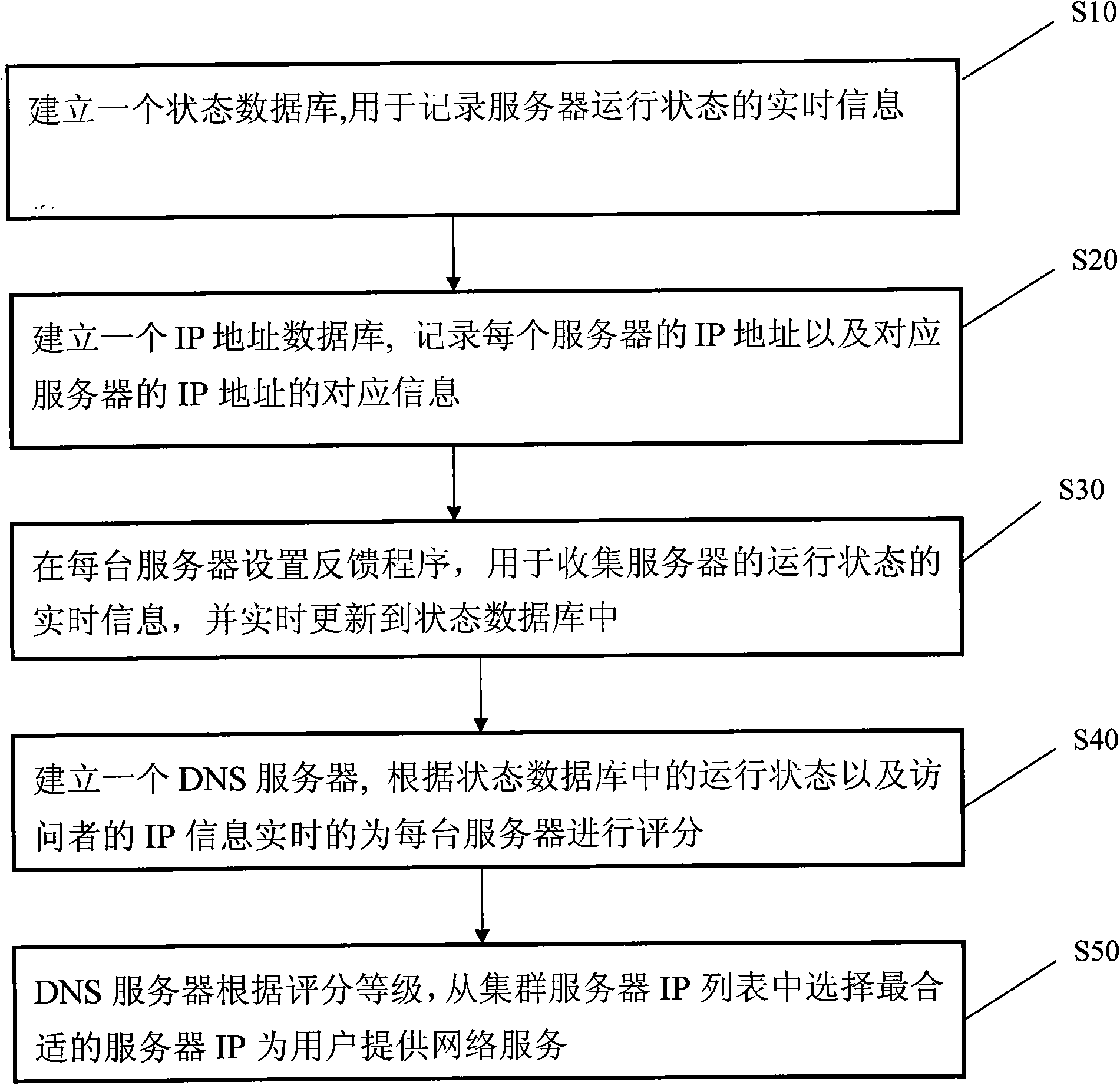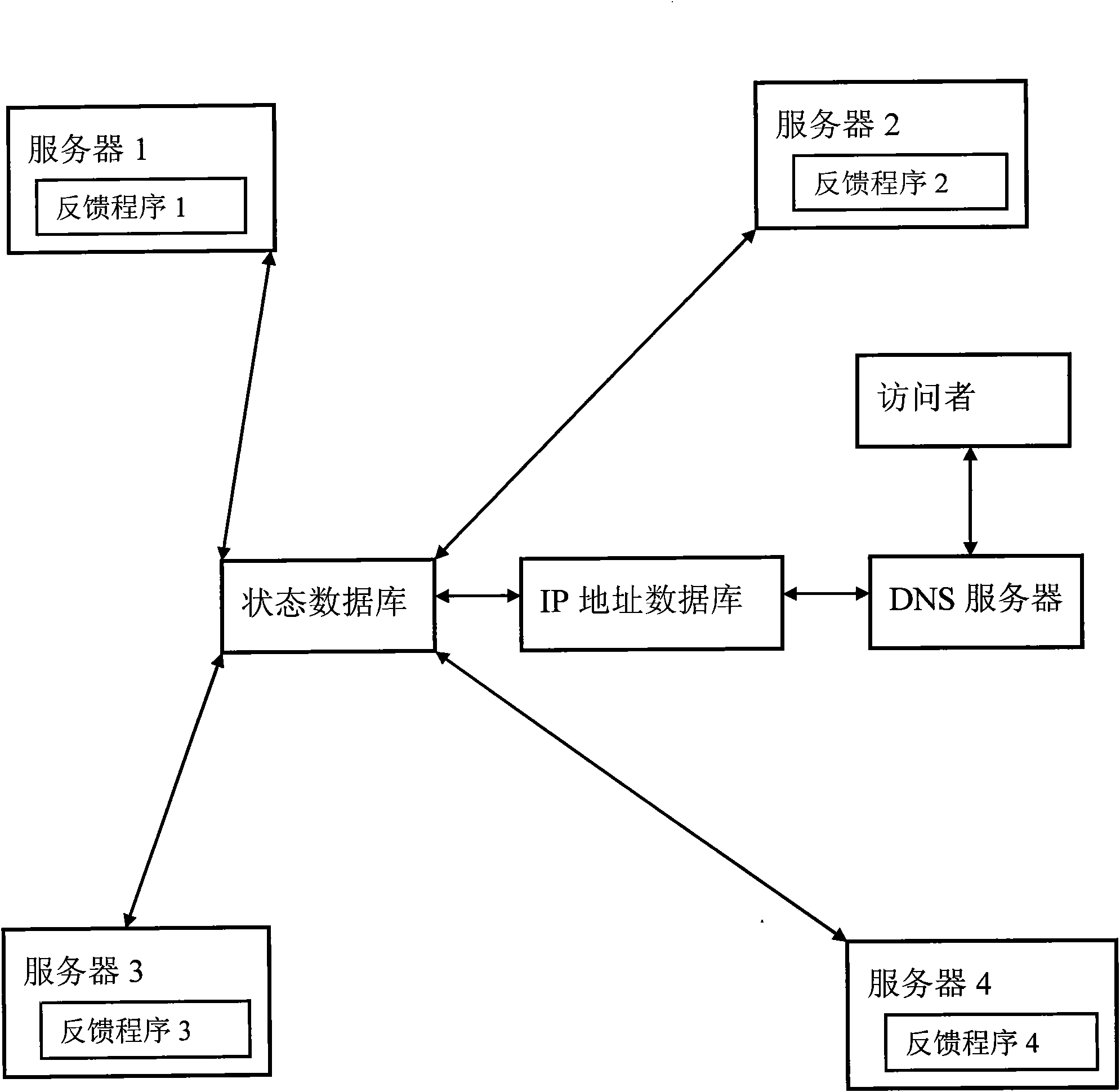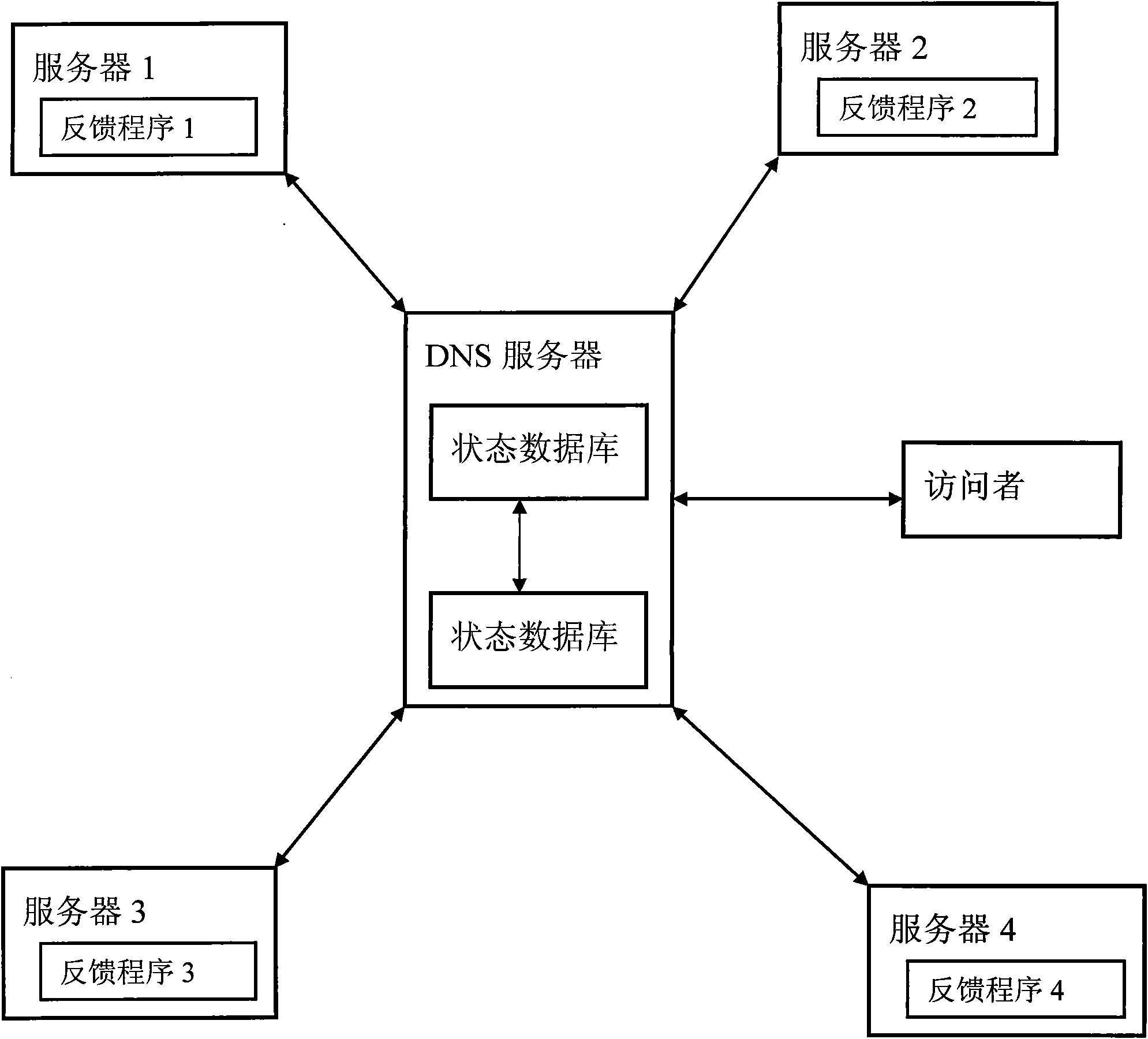Cluster server intelligent dispatching method and system
A cluster server and intelligent scheduling technology, applied in the Internet field, can solve problems such as poor service cluster effect, no consideration of server processing capabilities, and large differences in processing capabilities.
- Summary
- Abstract
- Description
- Claims
- Application Information
AI Technical Summary
Problems solved by technology
Method used
Image
Examples
Embodiment 1
[0037] The load set on server 1 is 2000 and 1800 users have accessed it, the remaining load is 200, the CPU usage is 60%, and the memory usage is 71%; the load set on server 2 is 2200 and there are already 1800 users User visits, the remaining load is 400, the CPU usage is 55%, the memory usage is 69%, the load set by server 3 is 1900, 1650 users have accessed, the remaining load is 250, the CPU usage is 73%, and the memory occupancy rate is 71%; and server 4 has a load of 2,100 units and has been accessed by 1,800 users, and the remaining load is 300 units, and the CPU occupancy rate is 64%, and the memory occupancy rate is 70%.
[0038] The above data is fed back to the state database by the feedback program 1, 2, 3, and 4. Since the remaining loads of the four servers are respectively 200, 400, 250, and 300, which are all greater than the set residual load of 100, DNS will not consider For the CPU usage and memory usage data of servers 1, 2, 3, and 4, the scoring level of s...
Embodiment 2
[0040] The load set on server 1 is 2000 and 1950 users have accessed it, the remaining load is 50, the CPU usage is 60%, and the memory usage is 71%; the load set on server 2 is 2200 and there are 2140 User visits, the remaining load is 60, the CPU usage is 55%, the memory usage is 69%, the load set by server 3 is 1900, 1830 users have accessed, the remaining load is 70, the CPU usage is 73%, and the memory occupancy rate is 71%; and the server 4 has a load of 2100 units and 2020 users have accessed it, and the remaining load is 300 units, the CPU occupancy rate is 64%, and the memory occupancy rate is 70%.
[0041] The above data is fed back to the state database by feedback programs 1, 2, 3, and 4. Since the remaining loads of the four servers are 50, 60, 70, and 80 respectively, which are all greater than the set residual load of 100, DNS will not consider The remaining loads of servers 1, 2, 3, and 4 are respectively 60%, 55%, 73%, and 64% according to the CPU usage, and t...
Embodiment 3
[0043] The load set by server 1 is 2000, 1950 users have accessed it, the remaining load is 50, the CPU usage rate is 71%, and the memory usage rate is 67%; the load set by server 2 is 2200, and there are 2140 users User visits, the remaining load is 60, the CPU usage is 72%, the memory usage is 66%, the load set by server 3 is 1900, 1830 users have accessed, the remaining load is 70, the CPU usage is 73%, and the memory occupancy rate is 65%; and the server 4 has a load of 2100 units and 2020 users have accessed it, and the remaining load is 300 units, the CPU occupancy rate is 74%, and the memory occupancy rate is 64%.
[0044] The above data is fed back to the state database by the feedback program 1, 2, 3, and 4. Since the remaining loads of the four servers are 50, 60, 70, and 80 respectively, all of which are greater than the set residual load of 100, and the CPU usage They are 71%, 72%, 73%, and 74%, all of which are higher than the set value of 70%. DNS will not consid...
PUM
 Login to View More
Login to View More Abstract
Description
Claims
Application Information
 Login to View More
Login to View More - R&D
- Intellectual Property
- Life Sciences
- Materials
- Tech Scout
- Unparalleled Data Quality
- Higher Quality Content
- 60% Fewer Hallucinations
Browse by: Latest US Patents, China's latest patents, Technical Efficacy Thesaurus, Application Domain, Technology Topic, Popular Technical Reports.
© 2025 PatSnap. All rights reserved.Legal|Privacy policy|Modern Slavery Act Transparency Statement|Sitemap|About US| Contact US: help@patsnap.com



